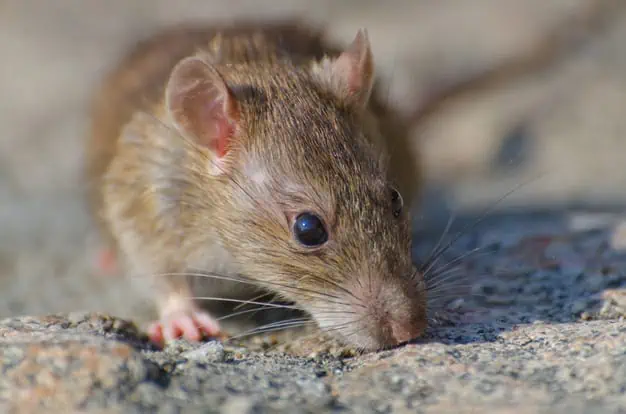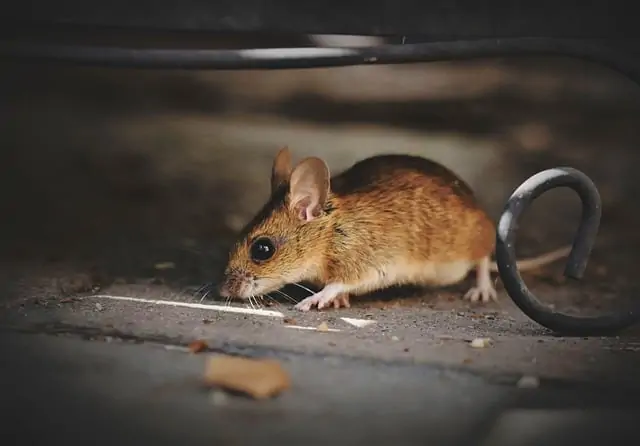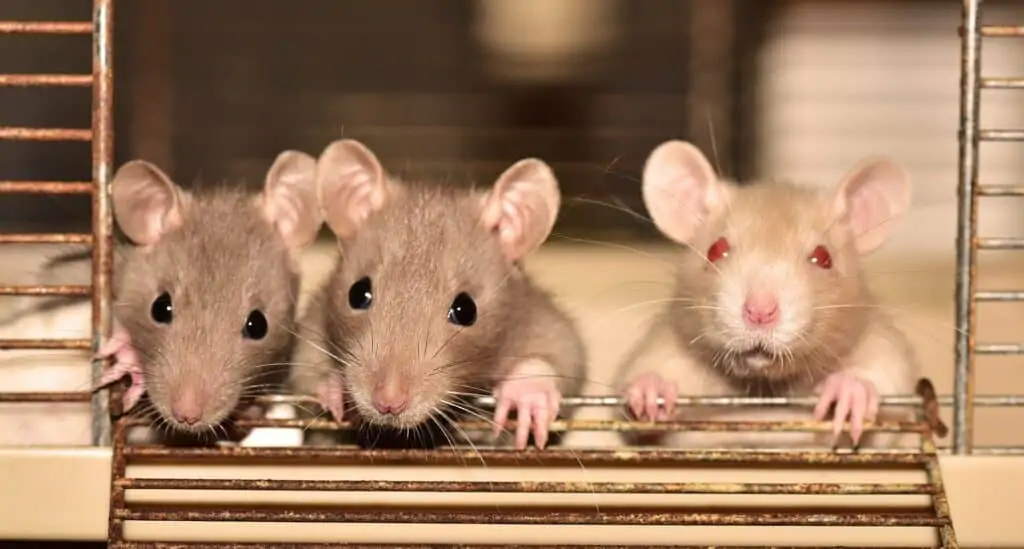Rat vs Mouse: What’s The Difference
If homeowners suspect they have a potential pest infestation they may be curious if it is a rat vs mouse problem. Both of which can cause serious property damage due to rodent behaviors and what they do to survive inside a house or a building. When it comes to rat vs mouse they are both known for holes in the walls, chewed electrical wires, and leaving droppings.
However, when dealing with a rat vs mouse infestation, exterminators need to know if it is indeed a mouse or a rat infestation, because what might work with one can be useless with the other. Also, when recognizing the type of infestation it will be easier for professionals to fully solve the pest problem, guaranteeing an efficient and quality service.
Mouse vs Rat: How to Tell the Difference
Having rodents on your property can become a big problem if it is not treated properly. It is possible that there might be more than one type of rodent prowling around your house.
When it comes to mouse vs rat control efforts, it is helpful to understand the difference and the behaviors of each. However, calling an experienced exterminator will be your best course of action as it will result in greater success as efficient extermination as they are trained to spot rat vs mouse differences.
Rats and mice behave and look different. Knowing the difference allows you to select the best course of action to eradicate them and prevent them from coming back. Nobody wants to get rid of rodents only to have them come back year after year. Not only is that expensive, it’s time consuming and frustrating.
Besides the physical damage, there are health risks people are exposed to when they have a rat vs mouse infestation at home. These types of rodents are responsible for transmitting more than 25 different diseases. This is why extermination, rather than just simply keeping your house clean, is the best course of action for your family’s health.
For instance, SafePro Pest will perform a thorough inspection to determine if you are experiencing a rat vs mouse infestation. We are experts at solving rodent infestation problems, and then coming up with solutions to keep your home pest-free and taking care of your family’s safety.
Mice
Mice are part of the rodent family and are mostly known as one of the most common pests in the US. These rodents get into houses or buildings causing property damage, not to mention being a possible health threat to those who live there – especially children and pets. Proper pest control can avoid and prevent mice from affecting families negatively.
Characteristics of a Mouse
In order to determine if you’ve seen a mouse vs rat you’re going to want to understand their physical differences.
A mouse generally has a small head, small feet, pointed snout, and large ears. Their bodies tend to be thinner in comparison to Texas rats. A mouse can weigh approximately 0.5 ounces (15 grams). If you see something small scurry across the floor, it’s most likely a mouse.

The color of their fur can also be different. Mice have light brown bodies with some gray shading and dark tail. However, depending on the type of mouse the color of their hair can be different from one to another.
A mature mouse can be distinguished from a young rat by its larger ears and longer tail compared to its body length than the rat. Due to its smaller size, mice eat less than rats, so their droppings are also smaller and shaped like rods.
When it comes to the diets of mouse vs rat, it’s important to note they have different food preferences. Mice like to eat cereal grains and plants, even though if they are in a challenging environment they will feed on almost anything.
Mice are not big fans of water but they can drink a whole gallon if available. Interestingly, they can survive a long time with less food and then yet eat everything in sight if they get the chance.
Mice can be spotted throughout buildings, in sewer systems, and sometimes outdoors. They build their nests in a hidden area near a food source. It will use just about any soft material or finely shredded paper to build its nest because those materials can conserve heat and keep its young warm.
Mice can reproduce quickly. A female mouse can breed up to five dozen baby mice in just one year. That’s the reason typically when you spot one mouse, it’s very likely that there are at least six more mice around.
There are also behavior differences between a Rat vs mouse. These are probably the most important key factors when experts are examining the infected property.
Mice are generally bolder than rats, they are curious and will explore new things, traps being one of those. Mice are social animals, they live in colonies, which makes it easier to find their hidden places.
Rats
Rats like mice are located in the top three of the most feared pests in the world. Unlike mice, rats can live indoors or outdoors, which makes it harder for exterminators to find their nests, and it makes them more likely to cause both internal and external property damage.
Characteristics of a Rat

Both types of rats can weigh a little over half of a pound to three-fourths of a pound. Because they have a bigger size they need more food and their droppings are bigger, like capsules.
Another mouse vs rat difference is their diet. Rats are omnivorous, so depending on the circumstances and availability, they may prefer fresh grain or meat. Since their feeding behavior can change with their environment, they can start chewing cardboard or plastic if they have no access to food.
Rats need 1/2 to one ounce of fluid each day. If they are not able to get water they will dig under buildings, along fences, and under plants and debris to get access it.
Unlike mice, rats are less particular regarding their habitat and will nest just about anywhere. The Norway rat lives mostly in burrows while roof rats nest in walls, attics, and trees. Black rats mainly inhabit buildings, and around ports as well as in ships in temperate countries.
In comparison to mice, rats are not that curious. Rats are generally very careful and will choose to avoid new things in their path. Rats are excellent swimmers, so they will live in sewers, and will enter buildings through broken drains. They are also good climbers, and the reason why some types of rats prefer to live in trees, especially in woodland and orchards.
Another important fact about rats is that they are nocturnal, have very poor eyesight, but have very strong senses of smell, taste, and hearing. They are not as social as mice, so it can be harder to find rat nests.
Importance of Knowing the Difference Between Rats and Mice
When hiring a pest control company, they will begin by evaluating your situation. A physical inspection will reveal any damage the rodents have caused, and the where any points of entry may be.
Knowing the difference between a mouse vs rat infestation will help determine the best course of action. Knowing the specific type of rodent prowling around will help the exterminator figure out where to find nests, points of entry, and areas they are likely to contaminate.
All of this information allows the exterminator to effectively eradicate the rodent problem and the entire extermination process can be completed easily and faster.
Also, it’s cheaper for you, the homeowner, as effective rodent control will cut down on multiple exterminator visits.
Once the exterminator knows the specific rodent they are dealing with, they can choose the exact sealing method or type of trap to use. What might work well for rats won’t necessarily work for mice.
Additionally, upon finishing the extermination job, the extermination expert can more accurately recommend preventative measures the homeowner can do to avoid future rodent infestations.
Can Rats and Mice Cause Health Problems?
Rats and mice are known worldwide for spreading more than 35 types of diseases. And when it comes to rat vs mouse rodent problems, they both seek food, warmth, and shelter indoors, especially in the winter months.
It is not uncommon to find both types of rodents have entered homes through small cracks and crevices. You’d be surprised at just how small an opening can entice both rats and mice to set up camp in your home.
Once rodents have settled in your home, it doesn’t take long for feces from mice or rats to accumulate. This is not only unsightly and unhygienic, this can spread bacteria, contaminate food sources, and trigger allergic reactions in humans.
Rats and mice droppings can spread diseases and viruses like: Plague, Salmonellosis, Leptospirosis, Tularemia, Hantavirus Pulmonary Syndrome, Omsk Hemorrhagic Fever, Rat-Bite Fever.

Salmonellosis
Rat-Bite Fever
This is a fatal infectious disease spread by infected rodents or by the consumption of food contaminated by rodents. Rat and mouse droppings are the main way these rodents contaminate food. The CDC says that symptoms usually occur 3-10 days after exposure to an infected source and include fever, vomiting, headaches, rash, and muscle pain.
Omsk Hemorrhagic Fever
This disease can contract Omsk Hemorrhagic Fever via tick bites or contact with blood, feces, or urine from an animal in which it is infected, sick, or dead. Rodents are the most common animal in which they are infected.
Also referred to as hemorrhagic fever virus (OHFV), a member of the virus family Flaviviridae. This is not prevalent in our area, but the disease is lethal if not treated, therefore, it is worth noting here.
It’s also important to understand that these diseases can be transmitted through direct contact such as rat bites, unsafe handling, and disposal of infected dead rats eating food or drinking water contaminated with rat urine, saliva, or hair. Also, these types of diseases can be transferred indirectly by ticks, fleas, and mites that live on infected rats.
Additionally, rodents can be huge property destroyers as they have a tendency to destroy insulation in attics and can chew through wallboards, cardboard, wood, and even electrical wiring.They have also been known to cause major flooding in homes with soy based piping.
Rodents cause up to 25 percent of house fires in the U.S. every year. Due to their rapid reproduction rates, rodents can quickly go from being unnoticeable to causing a full-blown infestation and becoming an unmanageable problem, so homeowners should look at prevention as the first line of defense again these pests and take steps to keep them out of the home.
How SafePro Pest Control Helps Exterminate Rat and Mouse Problems
We know how annoying a rodent infestation can be, that’s why SafePro Pest is the best option if you want to get rid of rodents once and for all. Whether it’s rat vs mouse, our staff is conformed by highly specialized exterminators which are properly trained to deal with any type of pest infestation.
No matter your rodent problem – big or small – we can help.
We care about our customers and strive to provide the best possible experience. That’s why we are dedicated to utilizing the best and most effective extermination methods in town.
Whether there’s a need for traps or home exclusion, rest assured that we will discuss all the options with you. If you are looking for a specialized pest control company, Safe Pro Pest Control is simply the best choice.
Our trained exterminators will also guide you and help you to prevent pest infestations in the future. The methods we use guarantee your family health, so you won’t have to worry about your family’s safety, you are in good hands with our dedicated team.
Not to mention that all of our employees are well-trained, licensed and insured. We don’t subcontract, so that you can rest assured that your home and family are taken care of by employees who represent SafePro and our values.
We want to give you the peace of mind that you’ve hired an exterminator that cares about your family, just as much as you do.
We’re family-owned and operated right here in north Texas and are experts in pests in this area. Also, we’ve received Angie’s Super Service award 12 years in a row. We’re proud to serve our neighbors and friends.

The GREAT NEWS IS… Safe Pro Pest Control Can Help
There is a reason Safe Pro Pest Control has been chosen eight years in a row as the Angie’s list award winner for pest control in Dallas/Fort Worth Metroplex.
Let’s take a closer look at what makes Safe Pro Pest Control the #1 voted rat extermination eight years in a row.
